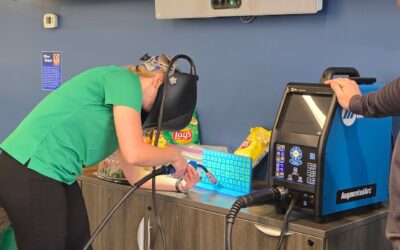(Relax, there won’t be a test.)
When I help clients, I first have to learn about their businesses – how they work, operate, and ultimately how they make money and succeed. So it only seems logical that clients should be given some insight into our business – how banks operate and make money. We’ll just go over the basics here… so welcome to Banking 101.
Bank deposit accounts like checking, savings and CDs
Ok, let’s start from the beginning. A bank makes the majority of its money by taking in deposits from its clients, and then lending that money back out to clients. Let’s use an example of a bank that has $100 million in deposits – primarily deposited into checking accounts, savings accounts, certificates of deposit (CDs), and other, less obvious deposit accounts. A bank’s deposits are classified as liabilities on their balance sheet because, in essence, the bank is borrowing the money from its depositors and have to pay it back when they withdraw the money.
Bank loans and the loan to deposit ratio
The loans a bank makes are classified as assets. It’s not always easy to think of loans that the bank makes as an asset, but ultimately they are assets that pay the bank money over time. One of the challenges that banks have is matching their deposits to their loans – striving for an optimal “loan to deposit ratio.” If a bank has a lot more loans than deposits, they will often go out and buy bonds on the open market to invest some of that money. These have to be very safe bonds, so most often the rates that a bank will get on bonds are significantly lower than the rates they can earn on a loan. The difference between the rate a bank pays on deposits and the rate at which they lend money (whether through loans or bonds) is called the “net interest margin.” The net interest margin, plus other non-interest income, make up the revenue of a bank.
Fees and expenses
Non-interest income generally comes in the form of fees from two primary sources: interchange income (every time you swipe your debit card, the bank receives a very small part of the transaction), and overdraft fees. Certainly not a popular fee, but there have been many changes over the years to reduce the incidence of overdraft fees.
You can probably imagine most of the expenses a bank has – salaries, buildings/rent, technology, marketing, etc. But there are also many industry-specific expenses you might not think of such as FDIC insurance premiums and the cost of audits.
How banks measure success
Typically, the measure of success many banks shoot for is a 1.00% return on assets. In other words, for every $100,000 in loans they make, they strive to generate $1,000 in profit for their shareholders. Unlike many banks, Alliance Bank is an S-Corp (like many of our clients) so we have a limited number of shareholders.
This ends the lesson. I understand this is a very simplified, high-level overview of the banking business, but hopefully it will help you better understand the perspective of your banker when you are talking to them about your financial needs.
If you have financial needs you’d like to discuss, please see me after class. Or stop by my office.


